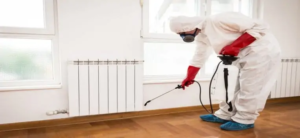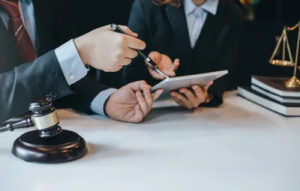Lawyers offer legal advice and guidance to individuals, companies, institutions, and the public. They research and interpret laws, precedents, and regulations to help clients resolve legal issues.
Lawyers must be proficient at a number of hard and soft skills to excel in their profession. They must be able to collaborate with others, remain neutral, and maintain confidentiality. Click here to Learn More.

Legal advice is a professional opinion about the law as it applies to specific circumstances. It is only given by an attorney who has established an attorney-client relationship with the client. It is not provided in exchange for monetary compensation or as part of a general practice, but is instead usually a component of a larger transaction, such as a real estate closing or a personal injury lawsuit.
While it may seem tempting to avoid the cost of consulting with a lawyer by using free online legal resources, those who do so risk their own futures by not having a full understanding of how the law applies to their case. Many of these online resources are not licensed attorneys and are simply providing legal information, not legal advice. Some may even be violating confidentiality and privacy rules by not clearly identifying themselves as lawyers and avoiding creating an attorney-client relationship.
Aside from this, there are a few different ways that people can obtain legal information. The first is to contact a legal aid office. Staff at these offices can provide litigants with legal information on a variety of topics, including court procedures and past rulings in similar cases. However, they are not allowed to suggest which option a litigant should pursue. Additionally, they cannot advise clients about the costs associated with each option.
The other way to obtain legal information is to visit a legal website or blog. These websites often contain detailed descriptions of the law and can be very useful in finding answers to common legal questions. However, they are not substitutes for a face-to-face consultation with a qualified attorney.
In addition to legal information, there are other kinds of legal assistance that may be available. These services can include filing documents, reviewing a contract, or even helping you collect debts. Depending on your situation, these services can be very helpful and affordable. However, there are a few important things to remember when seeking legal help.
The legal system protects the confidentiality of a lawyer’s work product by denying opposing parties the right to review it. This protection is necessary because, as Easterbrook (1981) argues, much of the value of legal research comes from the fact that it is private and therefore not accessible to other litigants.
Representation
When a client hires a lawyer, the legal professional assumes a variety of responsibilities and duties. In addition to providing legal advice, the lawyer is expected to perform several other functions, including acting as an advocate, negotiator and evaluator. In all these roles, the lawyer must act ethically and within the bounds of the law.
The responsibilities of the legal profession as a whole and of individual lawyers vary by jurisdiction. However, in most countries, lawyers are regulated by the law and must pass the bar exam to practice in their chosen field. Lawyers must adhere to the Rules of Professional Conduct, which outline various obligations and describe ethical practices.
Attorneys have a duty to protect the confidentiality of their clients’ information, but this is subject to certain exceptions. For example, the lawyer may disclose confidential information when the client consents to it or when disclosure is required or permitted by law. The lawyer also must keep informed of changes in laws and regulations that affect his or her practice.
A lawyer must be competent, prompt and diligent in fulfilling these professional responsibilities. In addition, he or she must maintain communication with the client concerning the representation and must keep in confidence information relating to the representation unless disclosure is authorized by the Rules of Professional Conduct or other law.
Lawyers should strive to attain the highest level of skill, improve the law and the legal profession and exemplify the legal profession’s ideals of public service. They should strive to achieve a high degree of professional integrity and be guided by their consciences. They must be prepared to disseminate their knowledge and serve the public interest through education, public service and community involvement.
In addition to advising and representing individuals, businesses and organizations on legal matters, lawyers can also be hired to serve as third-party neutrals in mediation and arbitration proceedings. When selecting a lawyer or legal professional, a person should take into account licensing and experience, communication and rapport, availability and fees. It is also a good idea to consider whether the legal professional is board certified in a particular area of law.
Negotiation
Negotiation is a form of dispute resolution that involves parties with differing views and different objectives working out an agreed outcome. It can take place in any setting and may involve two or more people. Often a third party is involved to facilitate the negotiations or to mediate between the disputing parties. Negotiation is common in the workplace and in all aspects of our daily lives.
During the negotiation process it is important to understand what you want to achieve from the negotiation and be prepared to compromise. It is also important to know what you’re willing to lose in the negotiation, such as a concession like a higher salary or more vacation time. The more preparation you put into your negotiating position, the more confident you will be going into the process and the better your chances of a successful outcome.
In a negotiation it is crucial to communicate clearly and respectfully with the other person(s) involved. The most effective negotiators are those who can separate themselves from their own perceptions and beliefs about a situation and look at it objectively. This allows them to better understand how the other side of the table perceives a situation and find ways to reach an agreement that will benefit both sides.
In some cases, Justice counsel will negotiate on behalf of a client department and must ensure that there is no divergence between their negotiating stance and the mandate of the client department. The degree of involvement will vary depending on the circumstances and the scope of the negotiations. It is also important to know that no one can be forced to participate in negotiations and that it is completely voluntary for everyone involved. If a party decides to withdraw from negotiations at any stage, it is not uncommon that other government departments will be asked to take over the negotiations. In these instances, it is important to have clear agreements in place that set out who will lead the negotiations and what role the Justice counsel will play. These agreements should also detail any specific expectations and parameters that must be met for an acceptable outcome.
Advocacy
The goal of advocacy is to make sure that people’s voices, wishes and preferences are heard and their rights upheld when they can’t speak for themselves or don’t know how to do so. An advocate is an individual who does this work and can be a lawyer or not. Advocates are trained in their specific area of practice and may be individuals or organizations like community groups, charities or social services.
Advocacy can take on many forms, from the very practical (like assisting with a court case) to the very political (lobbying and litigation). Some advocates have a legal background while others come from therapy or social work backgrounds and may focus on things like emotional support, safety planning and crisis intervention. Legal advocates often specialize in helping people navigate the justice system, such as vindicating the rights of those with criminal records.
Like any form of activism, advocacy requires a great deal of dedication and commitment. It can also be quite exhausting and challenging. It is important for advocates to be flexible enough to shift their efforts and message as situations change, which can happen very quickly in the world of advocacy. For example, when the COVID-19 pandemic hit, advocates for healthcare access had to quickly shift their focus.
Advocates can be a vital resource for people who are trying to navigate complex social or legal systems. They can help people to understand their options and make informed decisions about what is best for them. They can help to navigate bureaucracy and get the right people in front of the right decision makers to ensure that issues are given the attention they deserve.
While family members and friends can play a role in advocacy, it is sometimes more appropriate to use an independent advocate who is specifically trained in the role. This guidance focuses on commissioned and independent advocacy and on identifying who is able to receive advocacy (including those who are legally entitled to an advocate). It also covers the different types of advocacy that can be delivered, including self-advocacy, group advocacy, and advocacy in partnership with another person.






